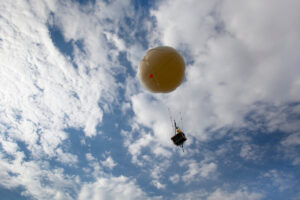Pilot training and flight are a bit safer and easier with Smart Rudder Bias
The next generation of pilots is here. I’m a little jealous. When I started, I had round dials; they have flat screens now. I had an ADF; they have the comforting pink line of Garmin. I had to do endless leg squats to build up my strength for multi-engine engine failures; they push a button. No, wait, they don’t even have to do that – the airplane automatically compensates when a loss of thrust occurs!
I sometimes wonder if modern-day pilots will be as skilled and proficient as we older ones are. The happiest day of my career was when they started taking ADF receivers out of airplanes (except, of course, now we can’t listen to our favorite sports teams on the radio anymore).
Multi-engine training wasn’t exactly a walk in the park either. Was there something about dead feet and dead engines? How quickly you determined whether there would be dead pilots. Whether you lose an engine during training or for real, help has arrived! The new tool, called the Smart Rudder Bias, is available from Garmin. It’s not all that new, but they are slowly and surely getting FAA approval to install the technology on more and more aircraft.
The latest airplanes to be added to the approved list are the B55/B55A Beechcraft Baron piston twins. Life will get easier and safer for these pilots and their passengers!
In case you are unfamiliar with the technology, it’s pretty slick. The Smart Rudder Bias is designed to adjust the force of the rudder pressure needed to control sideslip after an engine failure. It’s also capable of helping the pilot maintain the bank angle and even helps them avoid flying too slow. And it’s all done automatically.
The rudder bias is part of the Garmin Autonomi family and is meant to reduce the pilot’s workload, giving them more time to deal with the emergency while the airplane remains in complete control.
Now, with Garmin’s help, the pilot can be more conscientious about identifying the failed engine, shutting it down, and completing the emergency checklist, all at a pace that ensures correct and thoughtful decisions are combined with correct action. With proper pilot training and more FAA approvals for Smart Rudder installations, light twins will continue to improve their safety records and be a safe and efficient way to fly.










